Remapped engines - ECU remaps
"ECU reloaded"
Engine tunes are stored in the cars computer, in this article we will look at the benefits of revising this.
Because "Tune" conveys the thought of an analog process, this is actually a digital process, so many regions and areas have adopted the phrase Remap to differentiate a computer flash or mapping update from other "analog tuning mods."
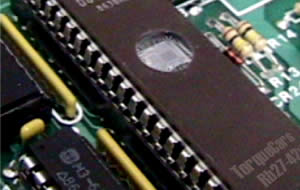
This article will expose the secrets used to sell maps, show all the different options discussing the pros and cons of each. Then we'll reveal the hidden drawbacks and problems of getting your car tuned/remapped and how to ensure you are happy with the end result.
Back in the good old days, the task of timing the ignition spark was performed by the mechanical distributor. The greater the RPM, the more the timing would advance.
It was clunky and mechanical but seemed to work reasonably well.
This did a sufficiently good job, but for the most effective power you would need to vary the timing to a greater degree than a fixed ratio advance curve.
The electronic ignition system was born giving much finer control over fuel delivery and spark timing advance. You ended up with a near perfect spark timing for a very limited RPM band.
A complete map of variables was entered into the ignition program and the preset timing would be read from a table.
Now air temperature, engine speed, engine load and even control over turbo/wastegate control & fuel delivery rates means that precise management of the engine ignition timing is possible and you can achieve the maximum power output throughout the rev range.
With the improvements in Turbo chargers and injector technology, a very precise amount of control over fuelling and power output can be achieved.
The manufacturers are primarily concerned with meeting emissions regulations, and this has pushed the evolution of the engine and engine technology to new heights.
So what does ECU engine tuning/remapping do?
Electronic ignition allows the manufacturer to fine tune the economy at popular road speeds such as 30mph, 56mph and 70mph where most cars spend a large proportion of their time.
(Some manufacturers in the 2016 cheat software scandal have even created code to detect test conditions and run super lean to pass emissions limits.)
It is now possible to advance the timing if the throttle is wide open to give greater power or back off the timing when cruising at constant speed for improved economy.
Why do OEM tuning maps perform so poorly?
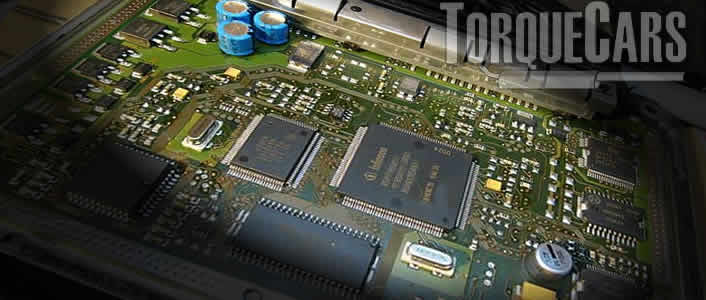
When a manufacturer creates a timing map they build into it a big margin of error to cope with: adverse temperature ranges, minor faults & bad conditions.
In some countries emissions targets vary as measured by CO2, HC, NOx and these usually require a fudging of the one setup for all approach
Manufacturers do not want people breaking down, suffering premature parts failure or to get a reputation for uneconomical cars so they build in a wide margin of tolerance.
Different countries use different grades of fuel and have varying degrees of extreme weather conditions, all these factors add to the fudge that has to be done to keep all the cars working well across the globe.
Each car that leaves the production line is also unique, some achieve 20bhp less and others can be 20bhp up on standard specs, depending on how well the components are machined and put together.
So rather than put each car through a unique assessment and get a bespoke timing map, they adopt a standard one map fits all philosophy.
It is also a fact that manufacturers use the tune/remap to produce different power versions of the same engine and get lower insurance cover ratings and better fuel consumption.
You start to see the fantastic scope for improvement, when you add into the mix the fact that the average TorqueCars reader will be adding better performing components to the car, you have a really strong case for a remap.
Other things that the manufacturer builds into their map equation is the possibility of user neglect i.e. infrequent servicing with items struggling like dirty plugs, bad leads, clogged air filters, partially blocked injectors etc... The list goes on.
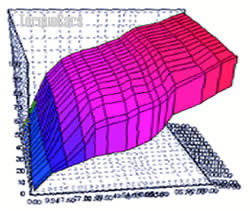
Who should go for a remap or tune?
Anyone who has added performance parts to their engine should consider a remap.
Remaps are also highly recommended for all modern turbocharged engines, where they typically add 20-30% more power.
If your car is a turbo model & has electronically controlled fuel injection, there are massive power gains on offer and TorqueCars would strongly recommend a remap.
Problems and Drawbacks of Remapping?
What are the hidden costs or drawbacks? You will need to be prepared to keep the car serviced more frequently, and, sometimes decreasing the service interval by half.
When you fill up you are also restricting yourself to high quality fuel and even high octane fuel if this was what the map was optimized for, and you must be prepared to replace components that fail due to the extra work they are doing.
When an engine is tuned to produce more power, you are also creating more stress and strain, so things will start to fail such as air flow sensors.
Any weak spots in an engine usually show up a couple of months after a tune/remap has been done. See our guide to diagnosing problems after a remap.
Generally the most common issues are that any turbocharger and clutch weaknesses will manifest themselves clearly after a remap.
Also turbos can wear out, other major components like pistons and bearings will need care and attention and you will find that the clutch lasts a shorter time.
What about tunes or remaps on NA (naturally aspirated) engines?
If you do not have a turbo there's very little to be gained by a tune/remap alone - perhaps only a few BHP (10% is typical).
So TorqueCars' recommendation for non turbo cars is to modify everything else first (cams, pistons, increase compression, engine balance, air intake, exhaust, head work, bigger valves etc...) after these things have been done you can then consider a tune/remap which will help you get the full benefit from them.
Care for a tuned/remapped turbo engine
On the subject of turbos, (briefly though as we have a comprehensive article on turbos in the forced induction section), a tune/remap will often introduce boost from lower down the rev range and because of this the turbo is running faster and hotter.
In this situation you must let the turbo cool down a little before shutting off the engine, otherwise, the oil will degrade and you will have an expensive turbo repair on your hands.
Fitting a turbo timer will also help with this problem and keep the engine ticking over until it has cooled down.
Ignore the Peak Power Claims
When comparing maps please ignore the peak power, this is the absolute maximum power and it's not unknown for tuners to create a power blip or spike to attract attention.
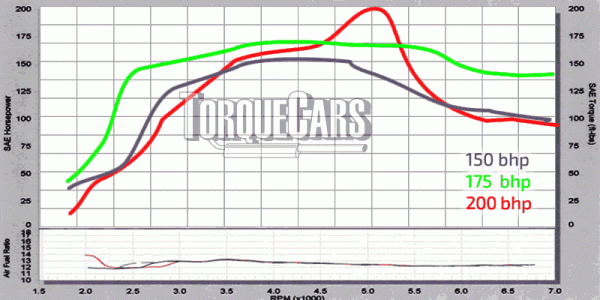
Instead, you should be looking at the overall torque curve. Too much low end power will wear the turbo and create traction issues, too much at the top end will also result in premature turbo and component wear.
In the image above, you'll note the power hike on the red plot, but see that power is down everywhere else, whereas the green trace shows a steady power increase through the entire RPM range.
The Green plot also shows peak power is hit at 4000rpm, a good spot for this engine which redlines at 7000rpm giving a decent spread of extra power where you need it most on your everyday drive.
We would aim for a map that shows a nice flat torque increase through the entire rev range, with minimal dips and troughs.
If a company can't show you a dyno printout you have to ask if the map has ever been tested or analysed, or someone in a dark office with a laptop has just had a fiddle with the fuel and spark advance tables hoping for the best.
Types of remaps
Off the shelf tunes or remaps (Generic)
Of course, the amount of power you choose has a bearing on the reliability and cost of running the car. Many people go for an off the shelf tune/remap which is on offer all over the country and in most regions and typically costs around £200-£500 $300-$650.
This is better than the manufacturer's map in that it uses tighter parameters but it is still a one size fits all job.
If you are after big power gains and have changed major components like the turbo, wastegate and have done extensive engine work then a custom tune/remap is the best option.
Custom engine tuning/remapping on a rolling road
You can't beat getting your car setup on a rolling road. Generic guesswork maps are much better than the OEM setups but they still leave a wide margin for improvement which can be further closed on a rolling road.
Being able to monitor power, fuel, and run engine diagnostics live makes a massive difference to the gains, and can allow the mapper to work around your cars unique quirks, those flat spots or lean/rich regions of the RPM range.
If you've fitted custom turbos, injectors, a camshaft, or anything where there is a variation from the norm a custom tune/remap is the way to go, and you'll pay a little more but the end result is really worth it.
Our members have used rolling road tune/remap services and none have had any issues or complaints!
DIY flash through the OBDII port
There are a few software options around that open up your ECU and allow you to adjust your cars mapping, but we strongly advise against this if you don't know what you are doing.
There are some preset flash devices that plug into your cars ECU and download your chosen map into the cars ECU. I tried one of these on my Audi and it had 3 maps to choose from that had been tailor made for me.
It took around 3 minutes to change the map but is a good option, however, the company I used didn't offer very good support, and there were a number of holes in the maps and the top power one was really smoky.
There are also a few firms that will sell you a map. They typically require a downloaded file from your car which they will tweak and return to you for writing.
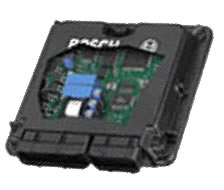
Switchable remaps.
Things have moved on and it is now possible to have a few maps stored which you can select from. This can be achieved through the cars on board display computer in many cases, or on others a Bluetooth or extra switch/panel/control is added to the car.
Some maps use the cruise control to choose a map, other companies offer handheld flash devices which allow you to choose a range of maps and upload these.
It is typical to have a valet mode to stop the boy racers at the garage thrashing your pride and joy on the "test run" to bed in the new wiper blades they have fitted!
Then there is often an economy option to give very frugal fuel consumption, particularly useful when cruising on long journeys.
Then you have the 'sport' or 'power' modes which give lots of power and often require high octane fuel, which is not always available or cost effective to buy.
TorqueCars strongly recommend that you get a switchable tune/remap - it may cost a little more at the outset but you will avoid many of the pitfalls of running a high power tune/remap all of the time by doing this and getting the best of both worlds.
It typically takes about 3 minutes to flash a car through the OBD port so is not an on the fly option.
Most people will run an economy map through the weekly commute and then go for a performance map at the weekend or a race map for track days.
Please do not confuse a tune/remap with the cheap Tuning boxes on auction sites, do you research on "tuning boxes" carefully.
Typically those that you can buy for £50 will generally contain little more than a £3 resistor and often do little more than fool the car into thinking the air is cooler than it is causing it to dump more fuel. Sadly there are some more expensive units, that also contain the basic resitor.
If it was really this easy to get more power from a car then the manufacturers would have already done that themselves.
Some cars are not easy to remap, I remember that the Rover MEMS & Toyota ECU's are a case in point.
The Manufacturer holds the key to the ECU and locks their Map into their firmware. Some ECU's are simply not reprogrammable. So what can you do? Is there an option?
Well thankfully there is and they are called piggy back ECU's or aftermarket ECU's.
Piggy back & Aftermarket ECUs:
Because aftermarket ECU's have really evolved since this article was first published in 2015 we have a guide to aftermarket ECU's here.
Piggy back ECUs connect between your existing ECU and the engine sensor inputs and outputs. All work slightly differently and apply some or all of the following combinations.
Some will adjust the sensor readings such as air temp, engine speed, crank position and effectively lie to the standard ECU forcing a more aggressive timing.
Some will actually perform their own calculations and take over control of some aspects of engine management like turbo waste gate control and ignition timing.
Some will take the standard ECU output and modify the signals sent to change timing and learn to guess the next output a split second before it is needed using the base ECU map and just enhancing it a little.
Tuning boxes are relatively new and these alter readings going to and from the ECU giving extra power or economy.

Some cars cannot be mapped or you may have added mods that the ECU processor cannot physically handle.
In this case you would look to an aftermarket ECU which can take over, such as those from Apexi, Megasquirt, Hondata etc...
Aftermarket ECUs are often direct replacements for the car's ECU and will take over all the functions associated with it.
They are generally faster and able to cope with a wide variety of additional factors such as water/methanol injection and a turbo timer.
They can often provide more channels, faster switching and control and more fine tuning of the engine combustion process.
Be wary though, as some piggy back ECUs and aftermarket ECUs do not include knock protection.
If this is the case then set your timing conservatively and use high octane fuel.
As with all ECU upgrades you are still dependant on having the car in top condition as you are removing the tolerances built-in for dirty plugs, cheap fuel, or minor electrical faults. Join us in the TorqueCars forum to discuss all aspects of ECU tuning and sport computers.
Please Check out my YouTube channel, we're regularly adding new content...
PLEASE HELP: I NEED YOUR DONATIONS TO COVER THE COSTS OF RUNNING THIS SITE AND KEEP IT RUNNING. I do not charge you to access this website and it saves most TorqueCars readers $100's each year - but we are NON PROFIT and not even covering our costs. To keep us running PLEASE Donate here
If you liked this page please share it with your friends, drop a link to it in your favourite forum or use the bookmarking options to save it to your social media profile.
Feedback - What do You Think?
Please use our forums if you wish to ask a tuning question, and please note we do not sell parts or services, we are just an online magazine.
Help us improve, leave a suggestion or tip
Please watch this video and subscribe to my YouTube channel.
12 Responses to “Remapping the ECU – tunes or remaps benefits and issues”

 Click to accept YouTube Cookies & Play.
Click to accept YouTube Cookies & Play.
i just bought toad and it has ecu flash. i would like the best starting point for re mapping. i have an cold air and header,2.25 exhaust,msd 6a. thanks
Very helpful and I felt very honest. I recently purchased a 2006 Range Rover and have been toying with remap to help with fuel economy. I think this article has been non-biased enough to help me make my decision. Thanks.
have been told to carry out a stock remap of my mps 6 2.3t to gain about 60bhp
then replace my stock filter and my stock bov
i didnt think it was safe to remap a stock vehicle and the garage want to take my ecu out to remap then put it back??????????????/
This is a very detail, useful and easy to understand explanation on ECU modifications. Really did help me a lot to finally understand what is ECU remapping and what is Piggyback ECU all about. THanks!
Can someone explain the implications on insurance (third party liability) after ecu remapping?
If a car is remapped are the safety features still intact ?
e.g. Airbags, ABS, ESC etc.
They should be there. We have heard of people flashing generic downloaded maps and losing the cars immobiliser. Go to a reputable tuning company to perform a read, modify and flash and you should be fine.
I bought a 2.0 mk1 focus in feb to turn into a track day car, did a few mods – Stainless manifold, K&N Panel filter, reworked airbox, intake ducting and pipes, good service and 8mm silicone performance leads.
Stock produced 128bhp.
With mods dyno run 139bhp.
Remapped dyno run 149.7bhp.
torque went up from 130 ft lbs to 170 ft lbs…
22bhp & 40 ft lbs increase from a naturally aspirated engine (still running stock cams and injection)
Coming from the computer world and the era of overclocking, this is by far the clearest, most concise and informative overview of electronic engine retuning that I have come across. It takes a lot of mystery away and has great general tips. THX MUCH!
I’ve been told not to tune box my BMW 335D and to have it remapped, can you recommend a company in the Midwest USA that offers this service or a tuning box that you trust for my make/model
IMO a “remap” will not help increase the turbo boost pressure any earlier as the boost rise is controlled by the turbine AR and the blade design and the exhaust gas flow is governed by more revs and engine load = more gas flow = more boost pressure
It depends on the car setup, quite a few now have an electronically controlled wastegate as manufacturers deliberately cut the turbo at low rpm to reduce turbine wear and help fuel economy.